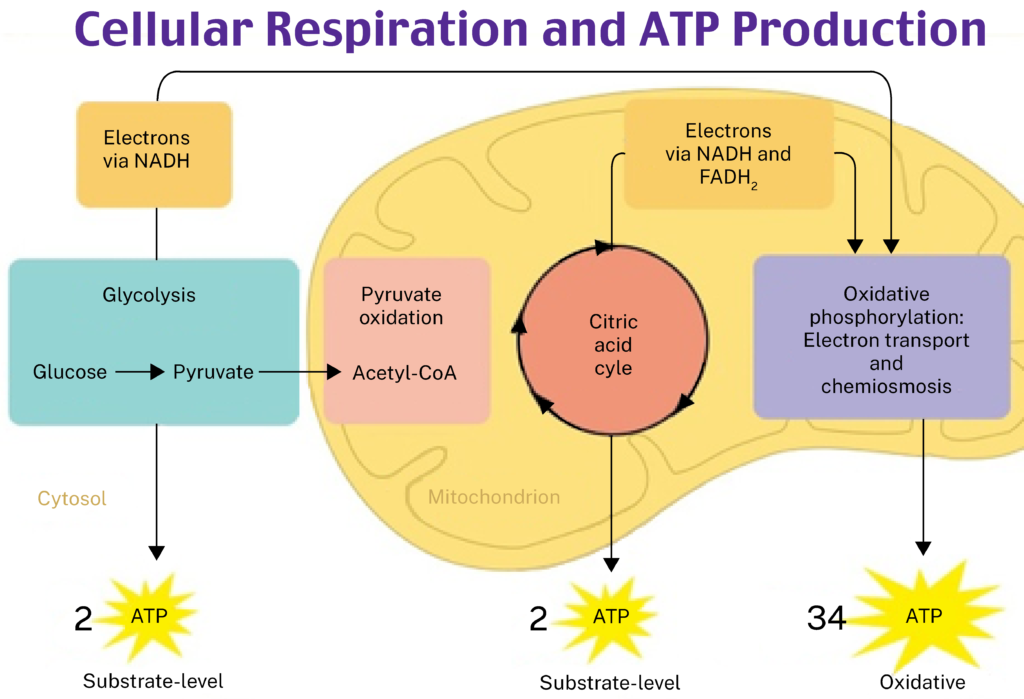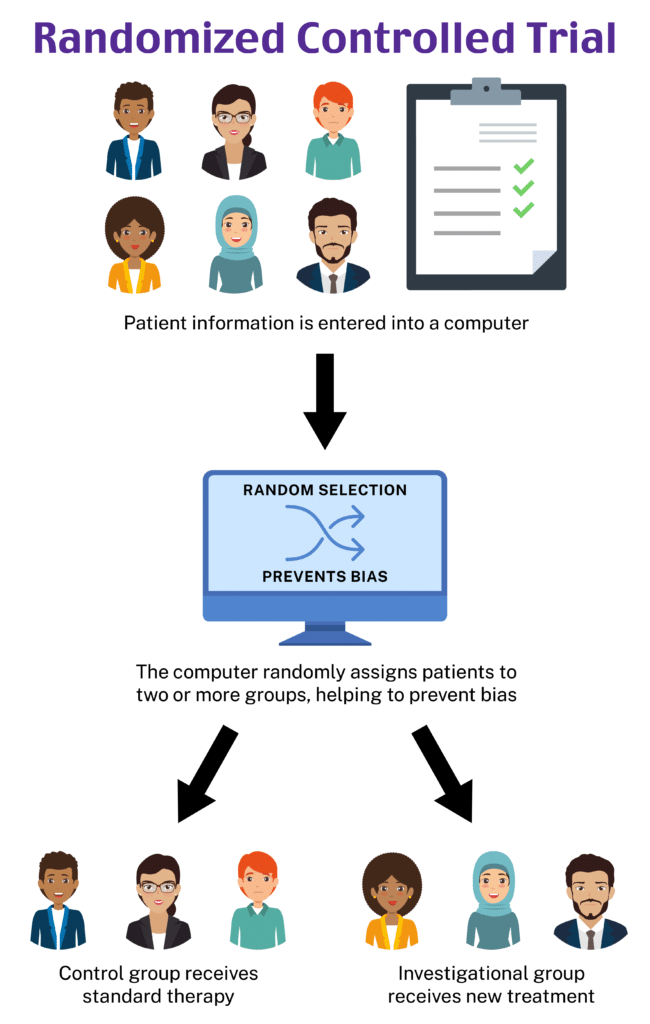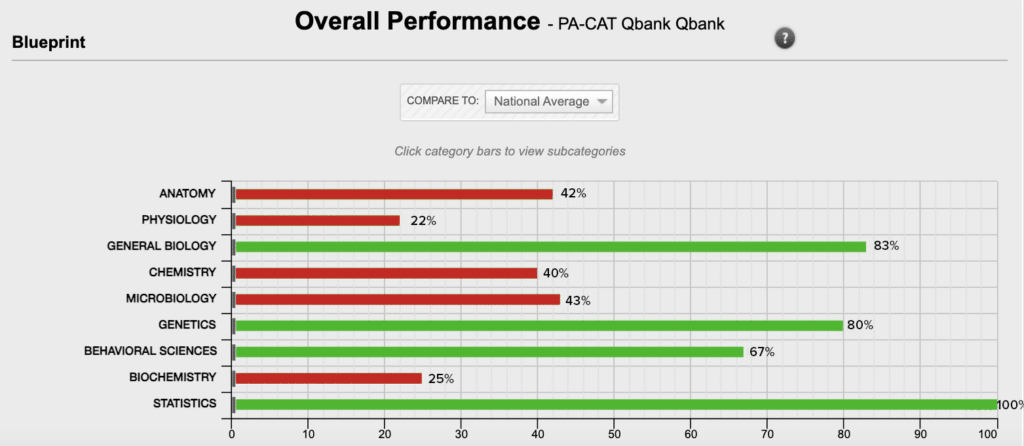How to Crush the PA-CAT Exam with Rosh Review Practice Questions

You’ve decided to apply to PA school—congratulations! You’re about to embark on an exciting (and busy) couple of years on your way to becoming a PA-C. As PA school application numbers have grown, administrators have started to use the Physician Assistant College Admission Test (PA-CAT) by Exam Master to help determine applicant knowledge and assist in the admissions process. So what is this exam, do you need to take it, and how can you prepare with a Qbank?
First things first: What is the PA-CAT exam?
The PA-CAT exam measures your knowledge of core subjects that are prerequisites for PA school. It’s designed to test your academic ability and determine your knowledge base to see if you’re a good fit for the program you’re applying to.
The PA-CAT exam consists of 240 multiple-choice questions that cover nine core subjects (listed below). You have 4.5 hours of total time for the test, and it’s administered electronically at testing sites.
What subjects does the PA-CAT exam cover?
The PA-CAT exam covers knowledge, comprehension, application, and analysis in these nine subjects:
- Anatomy
- Physiology
- General Biology
- Biochemistry
- General and Organic Chemistry
- Microbiology
- Behavioral Sciences
- Genetics
- Statistics
Should I take the PA-CAT exam?
If the programs you’re applying to don’t require or recommend the PA-CAT exam, you can still take it as a self-assessment tool or to increase your core subject knowledge.
Noting that you’ve taken the exam can give you an edge on your applications by showing that you’re dedicated to learning.
How can I prepare for the PA-CAT exam?
The point of the exam is not to test your memorization skills—it’s designed to show that you understand the material and can properly apply it. Some memorization will be necessary (like with anatomical terms), but your focus should be on truly knowing the material before you memorize anything.
This is where a Qbank with practice questions, which you can use to create your own PA-CAT practice test, becomes invaluable. And Rosh Review is the only Qbank with practice questions approved by Exam Master to prepare for the PA-CAT exam.
Why is using a Qbank so critical when preparing for your PA-CAT exam?
Retrieval Practice
Answering a practice question forces you to retrieve the information from your memory, which is a much more effective way to cement the knowledge in your memory than if you only read from a review or textbook.
Spaced Repetition
Answering PA-CAT practice questions repeatedly over days to weeks creates stronger memory bonds between topics and solidies your knowledge.
What will I find in the PA-CAT Qbank?
Hundreds of Practice Questions
All practice questions in the Rosh Review PA-CAT Qbank match the categories and learning objectives from the Exam Master blueprint for the PA-CAT. Each question is written by experienced clinicians and educators who distill exactly what you need to know about anatomy, physiology, general biology, biochemistry, general and organic chemistry, microbiology, behavioral sciences, genetics, and statistics, so you won’t be spending valuable time on unrelated subjects.
Comprehensive Explanations
Each question in the Qbank includes detailed explanations of the correct and incorrect answers—because understanding why an answer is incorrect is just as important as knowing why one is correct. Explanations also include custom teaching images that simplify difficult concepts and help you visualize them.
Here are some examples of images you’ll see in the Qbank:
Anatomy
Physiology
General Biology
Biochemistry

General and Organic Chemistry
Microbiology
Behavioral Sciences

Genetics
Statistics
Personal Analytics
The PA-CAT Qbank includes an analytics section that shows your progress as you answer questions and tracks how well you’re doing in each category. This allows you to spend your time wisely by focusing on weak topics. For example, if your analytics show that you have a good foundation of anatomy but your statistics could use some work, you know to repeatedly target statistics questions until you’ve grasped the concepts.

Practice Exams
Soon you’ll also have access to the Mock PA-CAT, a practice test that mimics the actual exam. Taking the Mock PA-CAT will give you an even better idea of the areas you still need to focus on before exam day.
When you take the mock exam with the same time constraints and settings as the actual test (sitting in one place without music, your phone, or frequent snack breaks), it will prepare you for what to expect on exam day. This practice run will also help you get a boost of confidence, knowing you aren’t walking into an unknown.
Mobile App
You can access your Qbank from an easy-to-use app on your mobile device, allowing you to get in bursts of studying on the go. Waiting for an appointment or commuting on the subway? No problem—you haven’t lost valuable study time! And when you get home, easily switch over to your computer or tablet—your progress is saved across all devices.
Preparing for PA school is step 1 on your journey toward becoming a PA-C. If the PA-CAT exam is in your future, you’ve got this! Taking the PA-CAT depends on many factors, but at minimum it will set you apart from all the other applicants applying to PA schools, so follow the 4 points below to set yourself up for success on the exam. Remember that building this foundation of knowledge early on will better serve you through school and your career—and more importantly, it will help you provide more well-rounded care for your future patients.
4 Key Points to Achieve a High Score on Your PA-CAT Exam
- Study with the only PA-CAT practice questions approved by Exam Master for the PA-CAT
- Learn exactly which subjects are covered on the PA-CAT to avoid wasting valuable time on areas that won’t appear on your exam
- Use practice questions and a combination of learning techniques such as retrieval practice and spaced repetition
- Pay attention to Rosh Review’s custom teaching images—they’re ideal for visual learners who better understand topics by seeing them drawn out
Access the PA-CAT Qbank
FAQs
Get a little more clarification
The GRE is a standardized test focusing on math and verbal skills. It's commonly required for many PA school applications.
The PA-CAT focuses on the typical prerequisite requirements for most PA schools: anatomy, physiology, general biology, general and organic chemistry, biochemistry, microbiology, behavioral sciences, genetics, and statistics. This exam can help you identify areas you struggle with before PA school, or it can demonstrate your knowledge and make you a stronger applicant.
Find out more differences between the two exams at PA-CAT vs. GRE: What You Need to Know for PA School.
- Anatomy
- Physiology
- General Biology
- Biochemistry
- General and Organic Chemistry
- Microbiology
- Behavioral Sciences
- Genetics
- Statistics
Read more about How to Crush the PA-CAT Exam with Rosh Review Practice Questions.





Comments (0)